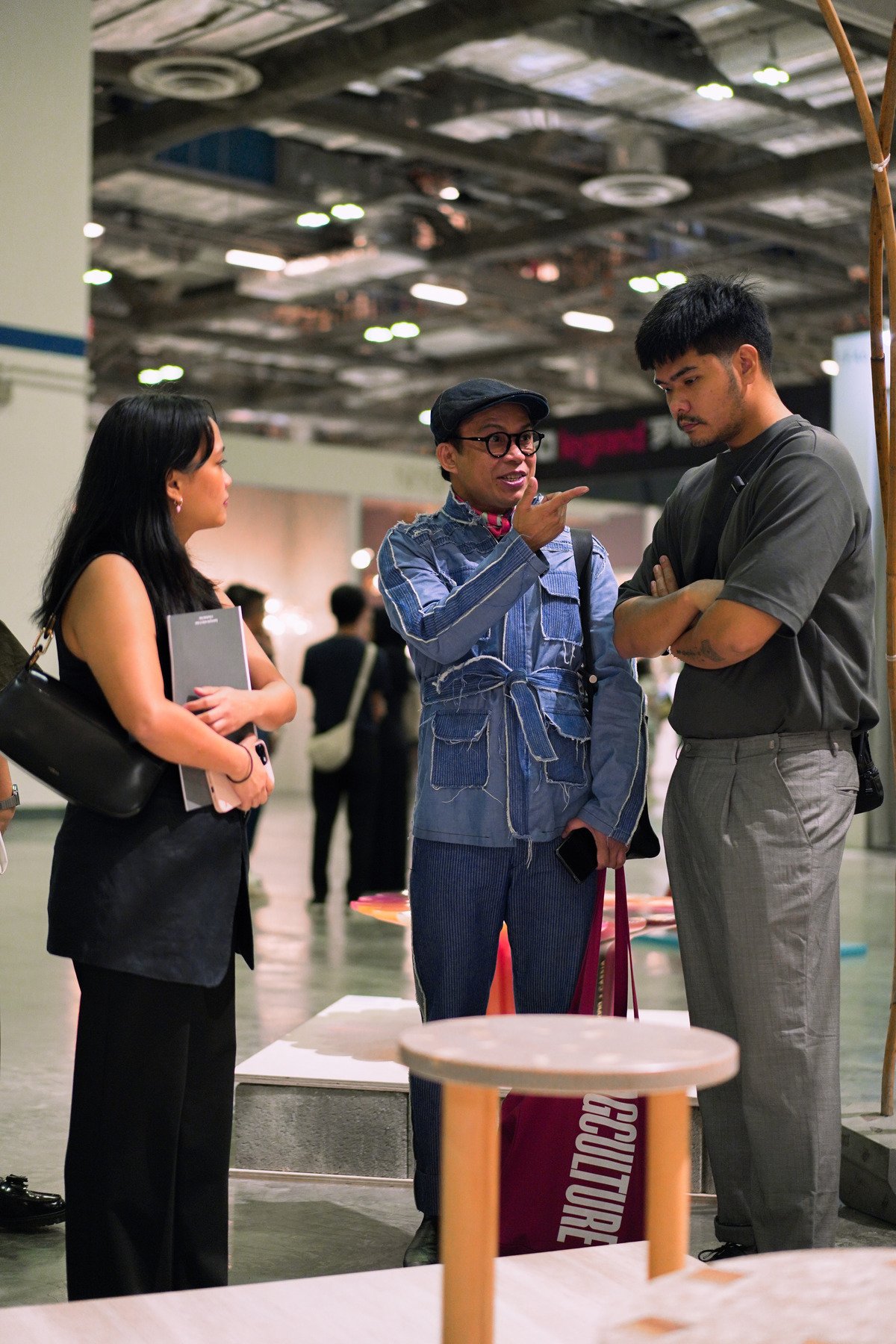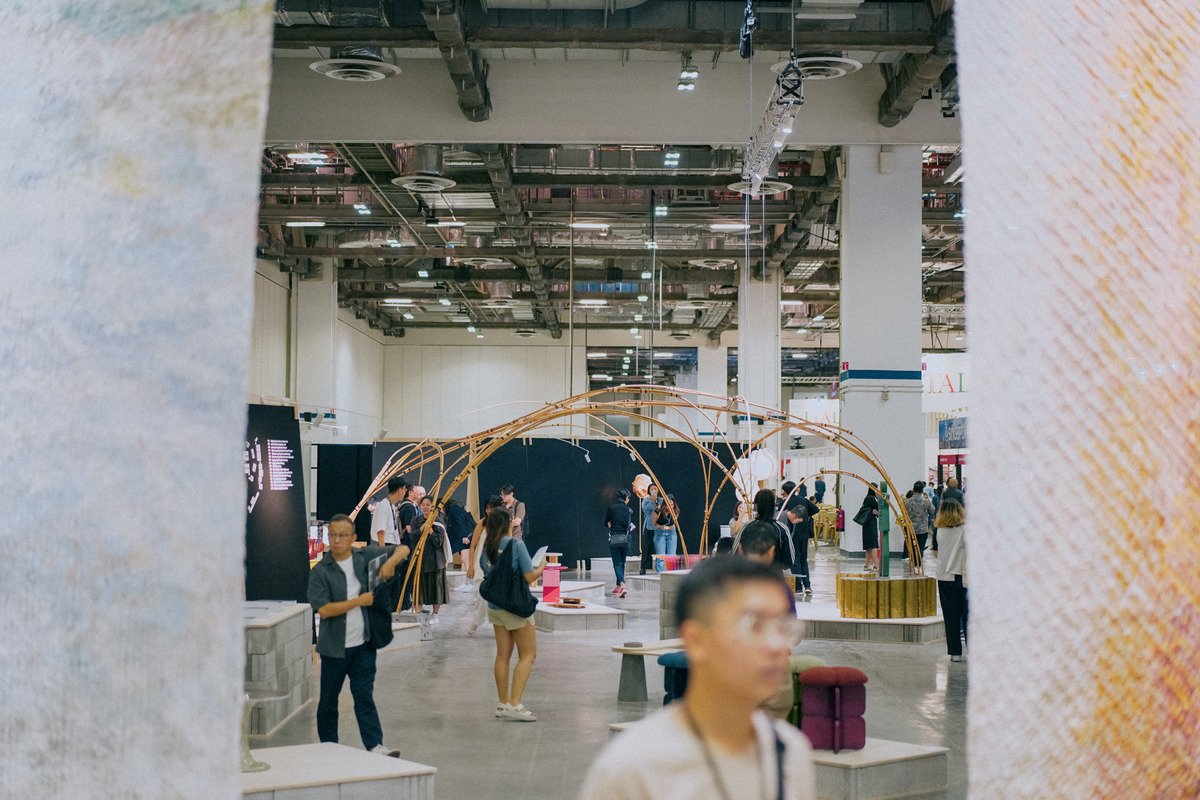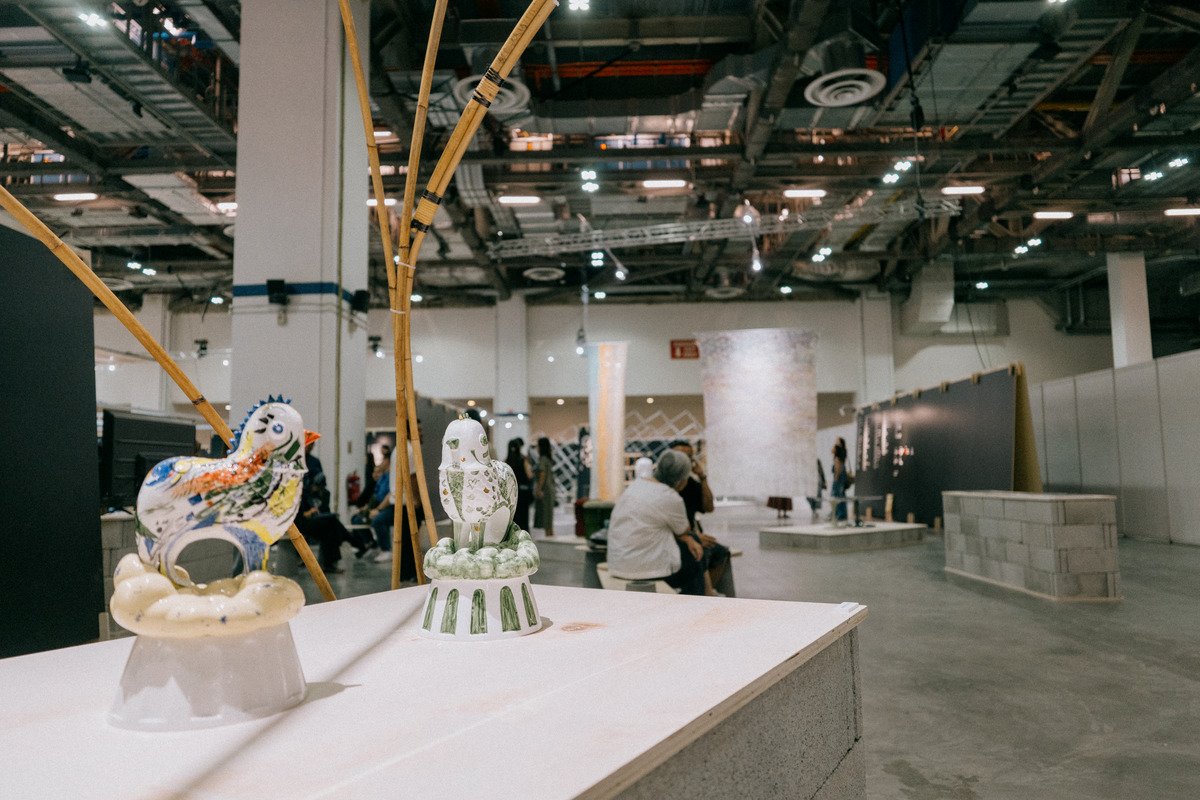Word and images Simon Te


Good design is the product of good conversations. We can argue that elegant solutions emerge when people can share the problems they aim to solve. But who gets to be part of these conversations? How often should they take place? And at what scale? How can communities be formed without space for these conversations?
To explore this further, I headed to Singapore for a snapshot of Asian design at FIND Design Fair 2024. Spun to life by DesignSingapore Council, the Singapore Tourism Board, along with DMG Events and Fiera Milano—the organizers of the renowned Salone del Mobile—the fair boasted over 300 exhibiting brands, tens of thousands of attendees, and an assembly of speakers from leading firms and practices, programmed over three days with panel talks and keynotes for the Global Design Summit. Rows of booths surrounded the large conference area at the Sands Expo and Convention Center, showcasing everything from lights to wall coverings to soundproof booths. The fair leaned more toward medium- to large-scale manufacturers than artisans.
However, tucked away in a quiet corner of the convention center was EMERGE, a showcase featuring 60 designers curated by Design Anthology’s Suzy Annetta. The space was humble yet deliberate. Designed and fabricated by the Singapore-based computational design and digital fab lab Superstructure, platforms of brick and plywood laid the foundation for the creative village’s work. Laminated plywood sheets formed walls, creating cozy corners that broke up what would have otherwise been a hollow shell. Conversations took place while people stood in front of the pieces or sat on cement and plywood benches scattered throughout the space. These clever benches were designed to conform to the exhibition’s layout.


Three structures punctuated the space: a solar system of stonework, a honeycomb of steel rods and cement blocks, and, at the opposite end, a bamboo dome. While more light might have helped brighten the dim exhibition space, the warmth it embodied was something felt more than seen.
The energy was palpable when I arrived at the fair on the first morning. Designers from Thailand, Vietnam, Indonesia, Malaysia, Singapore, and The Philippines welcomed guests and media with open arms during the three-day affair.
“Logistics were easy,” confirmed designers Jasser Aguila, Viktoria Laguyo, and Chini Lichangco. The organizers handled shipping and, to their surprise, even assembly and ingress. While we spoke, I noticed attendees crouching to inspect the underside of a table and sneaking behind displays to see how a lamp’s light bounced—curiosity that naturally invited the designers to share and engage. The crowd was curious, youthful, and refreshingly unpretentious.
Another conversation with Huyen Trang Nguyen of NonDesign—a newly formed Vietnam-based design collective participating in EMERGE—revealed that they had created the group just months before the fair to foster conversation within Vietnam’s design community and unify individual efforts that otherwise wouldn’t have reached the same audience. Huyen handed me a colorful pamphlet: “NONDESIGN,” it read. A grid of names, faces, and works filled the pages.
“Can you make a living from design in the Philippines?” Huyen asked. The Filipinos present exchanged glances, then responded collectively, “Yes, but it depends,” followed by nervous laughter.








Later, I joined one of the many EMERGE guided tours led by Suzy Annetta herself. She and a group of designers and media walked through the displays, sharing careful descriptions and brief anecdotes. These tours, which continued throughout the fair for students, industry stakeholders, collectors, and buyers, were a tireless but invaluable effort. After each tour, participants often broke away to have further discussions with the exhibitors.
In conversations with fellow Filipino designers, a recurring theme emerged: “What if we could do something like this back home?” “How can we make this happen?” I quietly wondered, “Who do we wait for, if anyone?” Outside of annual fairs like the Philippine International Furniture Show and Manila FAME, we lack outlets that foster consistent, meaningful discourse.




A conversation with Selena Placino after the fair revealed similar sentiments:
“I think we need an active design council—like in other countries—to organize talks, events, and exhibits not just during design week but throughout the year. There’s a gap between government design bodies and private practitioners. Our community needs more support and visibility. Right now, it feels like only people already interested in design are part of the conversation. I believe everyday people outside the field should know more about local design.”
About a week after EMERGE, Alvin Tjitrowirjo, Indonesian designer and founder of AlvinT, posted on social media:
“What makes a design exhibition exciting? For me, it’s the conversations it holds.”
In a brief chat, Alvin reflected on the challenges Indonesia’s design industry faces, drawing parallels with those in the Philippines. He highlighted familiar issues: limited strategic support, a lack of funding, passive associations, and the need for legal frameworks, certifications, and pricing standards. Alvin shared an inspiring initiative they created for Indonesia Design Week called Majalah Tempe—a playful installation inviting attendees to write down their aspirations and challenges in exchange for a packet of tempe crisps.




Living in a city that mirrors the archipelagic nature of its islands, I believe we must build communities that connect more and compete less. “We work too much in silos. The work needs to be seen. The more visibility you have, the more you cultivate not just a personal brand but the potential of what’s possible,” said Ric Gindap, proprietor of Spruce Gallery, who attended the fair to support the curatorial team and the Philippine delegation.
There is power in showing up—in offering physical presence, a sincere “congratulations,” or even an earnest question. There is power in gathering…and lingering, without everything being timed to an agenda. Simply being there carries weight. We may not need large halls or elaborate structures—though they are appreciated—but we do need to gather in small yet consistent ways. We need to meet over beers or iced coffee, share thoughts and wishes, and, most importantly, give each other time to get to know one another and understand the labor we put into things simply because we love them.
That was the magic I felt at the fair—designers, makers, and dreamers united by shared passion, proving that design thrives in community. When asked what makes a good show, Suzy Annetta responded, “It’s the people.” As I left the fair, I couldn’t help but wonder: If we focus more on creating moments like this back home, perhaps the future of Philippine design could be more connected, collaborative, and progressive.
I stood back for a moment, framing the scene—a fragment of our local design community, 2,400 kilometers from home. We were bonded by the mere fact of being there, and it felt hopeful. •


Simon Te is an artist, creative director, and designer with over a decade of experience in communications and advertising, a background that has taken him on journeys off the beaten path. He also co-founded and works as Creative Director of MOLD, a circular design studio. In his personal practice, he works on installation and experience design for both local and international brands, and consults for various creative communications projects.






